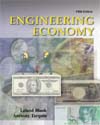After-tax analysis does not usually change the decision to select one alternative over another; however, it does offer a much clearer estimate of the monetary impact of taxes. After-tax PW, AW, and ROR evaluations of one or more alternatives are performed on the CFAT series using exactly the same procedures as in previous chapters. The after-tax MARR is used in all PW and AW computations, and in deciding between two or more alternatives using incremental ROR analysis. Income tax rates for U.S. corporations and individual taxpayers are graduated— higher taxable incomes pay higher income taxes. A single-value, effective tax rate Te is usually applied in an after-tax economic analysis. Taxes are reduced because of tax-deductible items, such as depreciation and operating expenses. Because depreciation is a noncash flow, it is important to consider depreciation only in the TI computations, and not directly in the CFBT and CFAT calculations. Accordingly, key general cash flow after-tax relations for each year are
CFBT = gross income - expenses - initial investment + salvage value
CFAT = CFBT - taxes = CFBT - (taxable income)(Te)
TI = gross income - expenses - depreciation + depreciation recapture
If an alternative’s estimated contribution to corporate financial worth is the economic measure, the economic value added (EVA) should be determined. Unlike CFAT, the EVA includes the effect of depreciation.
EVA = net profit after taxes - cost of invested capital
= NPAT - (after-tax MARR)(book value) = TI - taxes - i(BV)
The equivalent annual worths of CFAT and EVA estimates are the same numerically, due to the fact that they interpret the annual cost of the capital investment in different, but equivalent manners. In a replacement study, the tax impact of depreciation recapture or capital loss, either of which may occur when the defender is traded for the challenger, is accounted for in an after-tax analysis. The replacement study procedure of Chapter 11 is applied. The tax analysis may not reverse the decision to replace or retain the defender, but the effect of taxes will likely reduce (possibly by a significant amount) the economic advantage of one alternative over the other. | 


 2002 McGraw-Hill Higher Education
2002 McGraw-Hill Higher Education